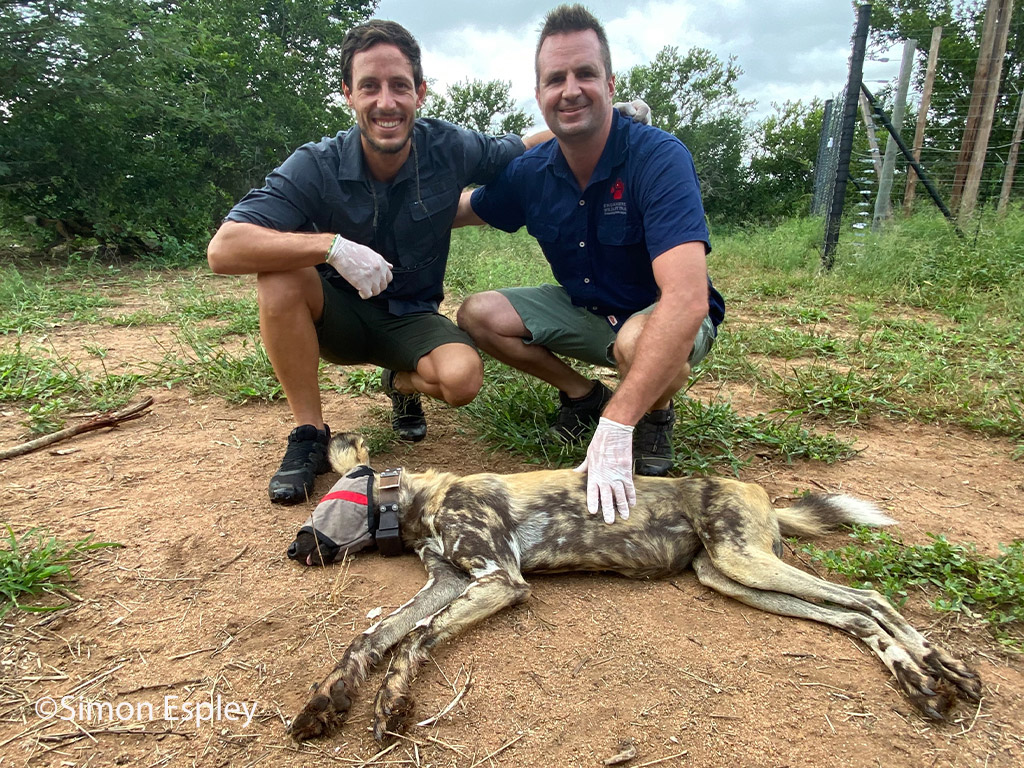
Ten painted wolves (African wild dogs) were successfully released a few days ago onto the 5,500 ha Rietspruit Game Reserve on the outskirts of the bushveld town of Hoedspruit near the Kruger National Park. This follows the recent release of 5 lions into the same reserve. Those lions were to play a significant role during the painted wolf Lycaon pictus release – more about that later.
The pack (two adult females and eight yearlings born in April 2019) are thought to be from the Thornybush area in the Greater Kruger but roam over a large area that includes private land outside of the protected area. They were captured in late 2019 and placed into a boma on Rietspruit for safekeeping, after landowners in the Guernsey area (outside of the Greater Kruger) complained that the canids were killing wildlife. The original plan was to relocate the pack to Gorongosa in Mozambique, to join a pack of 15 relocated there in 2018, but paperwork delays led to the decision to release the pack into Rietspruit Game Reserve.

It is almost impossible to restrict painted wolves to fenced reserves (they crawl under the fences through holes made by aardvarks and warthogs, as do leopards, hyenas and other species), and so it is likely that this group will reunite at some stage with remaining members of the pack (6 males and a female) that were last seen in a private game reserve bordering Rietspruit.
The monitoring of resident painted wolf packs (there are five in the Hoedspruit area alone), and stepping in to ensure safety from negative human influence when required, is a 24/7 operation that demands significant financial and other resources. In charge of the collaring and release operation was Grant Beverley, the Lowveld regional coordinator for the carnivore conservation program at the Endangered Wildlife Trust – a busy man. Packs roam over vast distances and encounter many man-made dangers such as bushmeat snares, intolerant landowners, livestock farmers, speeding vehicles and exposure to disease from domestic dogs. Helping Grant during the collaring of the female and subsequent release of the pack was Joel Alves of Wildlife Vets.



Speaking of lions
At a crucial stage of the release, when nine of the ten painted wolves had exited the boma to feed on an impala carcass, three large male lions appeared on the scene. Attracted by the excited chatter of the painted wolves and the smell of meat, these pride males were here to spoil the party. They barged in, scattered the pack and claimed the carcass. The lions eventually left the scene, and the tenth painted wolf left the boma safely. All ten pack members were seen the following day.

Who paid for this collaring operation?
Meet Michelle Campbell, a Hoedspruit resident and owner of Wild Wonderful World, who stumped up the R30,000 required to collar the painted wolf. Heroes like Michelle and Stephanie make an enormous contribution to painted wolf conservation. Be like them, donate here or email Grant Beverley.

Further reading about painted wolves (African wild dogs):
What’s in a name? Dogs or wolves, painted or wild?
10 Interesting facts about painted wolves
To comment on this story: Login (or sign up) to our app here - it's a troll-free safe place 🙂.![]()






